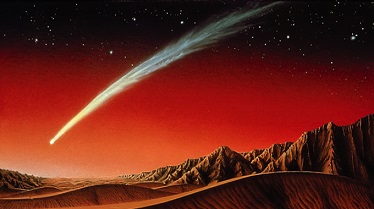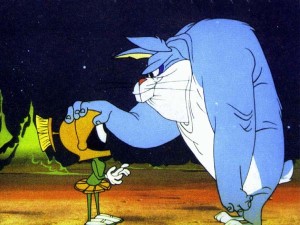NATO, Russia, and the View from Mars
Robert Heinlein’s classic novel Stranger in a Strange Land tells the story of a human, born and raised on Mars, who comes to Earth and struggles to understand the world around him. The protagonist of the novel, having no knowledge of the planet, is susceptible to misunderstanding issues based on a literal interpretation of all he sees and reads. Were he to come to the US or Europe today and pick up a newspaper or turn on the news, what would he think of Russia and its ambitions? Conversely, would he even encounter the word NATO? And would he have any concept of the fact that NATO is by far the most dominant military force in the world?
Obscuring the Truth with Media ■ The onslaught of Western propaganda in recent months has attempted to portray Russia as an aggressor – an imperial nation with designs on Ukraine and its other neighbors. Russia is presented as a belligerent actor using its military to menace former Soviet republics in order to reconstitute its former glory.
However, this narrative conveniently leaves out the fact that it is NATO, not Russia, which is actually escalating military tensions throughout the former Soviet space. While the US and European media build the myth of “Bad Vlad” and Russian imperialism, NATO is quietly deploying troops and hardware to critical locations, providing material support to nations along Russia’s borders and those of its allies, and generally raising the stakes and inviting the possibility of war. With headlines such as “Putin’s imperial project threatens European values” (Financial Times), and “Putin’s Imperial One-Man Show” (New York Times), the Western media has done yeoman’s work for Washington and Brussels, establishing the narrative that it is Russia that is an imperial aggressor seeking regional (global?) domination through military force. These media outlets frame the discussion as to the degree to which Russia seeks hegemony, not whether or not this is truly the case.
There is little to no mention of any national security or strategic interests that Russia might have in Ukraine, or anywhere else for that matter. No mention of Russia’s repeated moves to prevent all out war in Syria, or Russian warnings against wars in Iraq, Libya, and elsewhere. No mention of more than twenty years of NATO’s eastward expansion and encirclement of Russia. Save for a few voices such as Princeton Professor and renowned Russia expert Stephen Cohen, there is near unanimity in the mainstream media that the equation is simple: “Russia = Bad” and “US-EU-NATO = Good.”
In spinning this web of omissions and distortions, the media spider has entangled unsuspecting and uninformed news consumers like flies. Meanwhile, lurking in the background, NATO continues to expand its influence and mobilize its forces in Eastern Europe and all over the world.
Who Is the Real Aggressor? ■ As the situation in Ukraine has evolved and Russia has moved decisively to protect its interests and reintegrate Crimea into the Russian Federation, NATO has beefed up its presence in Europe and beyond. In the Baltics and the Arctic, NATO has engaged in large scale war games and other military exercises which, though “routine”, are obviously intended as a message to Russia that Western hegemony is not to be challenged. In Syria, NATO maintains an aggressive posture from Turkey, using its vast missile arsenal to menace Damascus and maintain strategic dominance over a war that its allies continue to foment. Beyond Eurasia, NATO has expanded its presence, with forces spread throughout Africa and now moving to establish a presence in South America.
In merely the latest in a seemingly endless series of provocative escalations in the Baltics, the United States has sent additional fighter jets to Lithuania to beef up NATO’s “Baltic Air Policing” rotation. With an already ubiquitous presence in the Baltic states, the US and NATO have taken the Russian response in Crimea as an opportunity to increase their military foothold in the region. In addition, as of writing this article, NATO is currently conducting a series of “military exercises” in Baltic airspace, utilizing the most advanced jets and communications systems as a show of force to Russia. So, while Moscow deliberately avoids moving any additional military personnel into Crimea, NATO seems to have taken the opposite approach, expanding its footprint in the region.
In Northern Norway, NATO initiated wide ranging military exercises that included 16,000 troops from 16 nations. The exercises, codenamed “Cold Response 14” include “large-scale troop movements, maritime offloads and positioning, snow covered foot and mechanized vehicle patrols, amphibious raids, an international brigade of simulated opposition forces, and multinational command level synchronization.” If you were sitting in Russia monitoring such exercises, and looking at a map of thousands of miles of Russian Arctic coastline, how would you feel? Any rational Russian military advisor or leader would naturally be deeply suspicious of such maneuvers and their true intent.
Meanwhile, NATO continues to cement its presence in the former Soviet republic of Georgia. A NATO assessment team recently visited Georgia on an official visit to monitor the country’s progress toward accession to NATO and its implementation of NATO-mandated defense “reforms.” Georgia’s Deputy Defense Minister Mikheil Darchiashvili noted:
NATO allies pay great attention to progress achieved by aspirant countries, especially in [the] defense sphere…We discussed the ongoing defense reforms in Georgia with NATO experts. We also had a comprehensive discussion of Georgia’s contribution to [the] NATO-led international operation in Afghanistan…The main topics of the meeting were the programs and mechanisms of cooperation with the Alliance…The progress achieved by the Defense Ministry is aimed at strengthening the defense capabilities and increasing interoperability with NATO [emphasis added].
In addition, recent weeks have seen visits to Georgia of high ranking US military commanders who have provided assurances regarding troop mobilization and military and logistical support against Russia.
For years, it has been clear that expanding NATO to include Georgia is a fundamental part of the aggressive strategy pursued by the West as a means of encircling, and ultimately dominating, Russia. The Russia-Georgia war of 2008 – begun by Georgia’s aggression in South Ossetia and Abkhazia – was a strategic wake up call to anyone who still doubted NATO’s true intentions in the former Soviet republic. So, NATO looks to absorb a country which shares a border with Russia and has a history of aggressive military action against Russian interests. Sure seems to fit the definition of “provocative.”
Beyond the former Soviet space, NATO continues to act aggressively. The war in Syria provides an ongoing pretext for strategic missiles being located in Turkey, near the Syrian border. Ostensibly placed in Adana to protect the city from “Syrian missile attacks,” the NATO missile system provides a menacing presence that not only is a stark reminder to Damascus, but also Moscow which maintains a strategic naval base in the Syrian city of Tartus on the Mediterranean coast.
Of course, it should be noted that NATO countries, and their allies in Saudi Arabia and Qatar, are principally responsible for the influx of fighters and weapons into Syria in the first place. Without their critical assistance and facilitation, not to mention political, financial and diplomatic support, there would be no war in Syria, hence no pretext for a continued NATO posture in Turkey.
In a move that may be startling to even keen political observers, NATO is moving to establish a presence in South America. In an agreement signed in 2013, Colombia has taken the first steps towards NATO integration and possibly hosting a permanent NATO military force. Naturally, the region is incredibly wary of NATO as the long and sordid history of US imperialism in Latin America has made the people of the region distrustful of NATO’s intentions to say the least. Nicaraguan President Ortega referred to the deal as a “knife in the back of the people of Latin America.” With NATO “cooperation” in its future, Colombia has moved even further in the direction of being an outpost for the US-NATO military machine.
And Don’t Forget…■ It should be remembered also that it was NATO that led the illegal and aggressive bombing of Serbia. It is NATO at the helm of the continued war crime called a “military operation” in Afghanistan, now in its thirteenth year. It was NATO that led the illegal war on Libya which destroyed that peaceful and prosperous nation and reduced it to a failed state. It is the US and NATO who have moved to place strategic missiles throughout Eastern Europe, under the auspices of a “missile shield.” Surely, these and other examples of blatant US-NATO imperialism haven’t been forgotten, even in the amnesiac West?
And, going one step further, objective observers would do well to remember that NATO is seventy five percent financed by the United States. With its vast military footprint all over the world, and the most powerful country in the world bankrolling it and using it for its own ends, could anyone seriously criticize Russia’s well-founded misgivings regarding NATO and its true agenda?
NATO’s continued expansion and aggressive posture fly in the face of the media narrative of the West, which portrays NATO as merely a bulwark against “Russian expansionism.” The upside-down logic of this notion should be self-evident to anyone who has been genuinely paying attention. The recent events in Ukraine have provided still more ammunition for those who seek to obscure the fact that it is NATO, not Russia, which is the true threat to world peace and stability.
If Heinlein’s “Man from Mars” were to use his vast intellectual, psychic, and perceptive powers observing the geopolitics of this unique world we call Earth, does anyone truly doubt what he would see as the genuine threat to peace? Were he to have seen the last twenty five years and then abruptly return to his home planet and provide his report, what might he say? And when the Martian leaders ask him what is the greatest threat on this strange, blue planet, his answer most certainly wouldn’t be Russia.
_________________________________________________________________________________________
Eric Draitser is an independent geopolitical analyst based in New York City, he is the founder of StopImperialism.org and OP-ed collumist for RT, exclusively for the online magazine “New Eastern Outlook”.
_________________________________________________________________________________________
Source: New Eastern Outlook. Images: © N/A
URL: http://www.a-w-i-p.com/index.php/2014/04/09/nato-russia-and-the-view



























